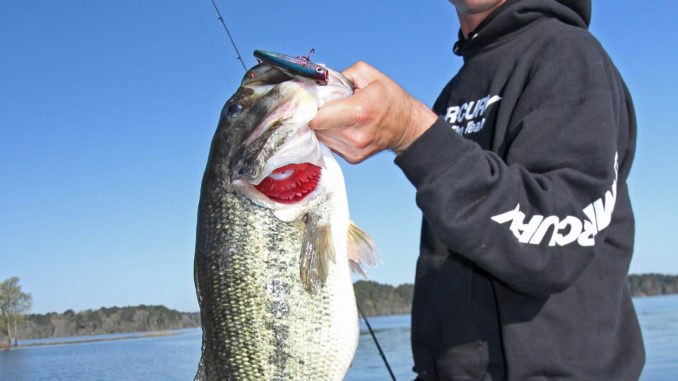
Transition toward summer areas puts largemouth bass on Kerr Lake into a topwater mode.
The year’s sixth month marks the beginning of a transitional period. Summer arrives on June 21, but there’s a lot of room for crossover, so anglers will do well to mind these margins and make the most of what a day offers.
Casey Ashley of Donalds, S.C., the reigning Bassmaster Classic champion, knows that many of the fish on Kerr Reservoir will soon be on their way — if not already moving — toward their plan for the forthcoming dog days. Put him on Kerr, aka Buggs Island Lake, in June and he’ll devote a lot of time to the pursuit of reaction bites.
“The bass are going to be postpawn and getting pretty close to a summer pattern, but there will still be a good topwater bite,” Ashley said.
As exciting as the surface scenario can be, there’s no room for one-trick ponies. Stressing diversity, Ashley said it’s important to understand how fish are likely to change throughout the day and how your approach should develop. For him, it’s basically a two-step plan, but both phases deserve close attention for their big-fish potential.
The first bait Ashley picks up to start his June mornings is a Luckycraft Gunfish — a long, slender topwater plug with a flat bottom that helps it walk smoothly. The bait has a cupped face, but Ashley doesn’t work it as a popper; just a smoothly enticing walker.
“I’ll throw this bait first thing on those long, flat points and look for fish that are schooling on bait,” he said. “This is a deal where you have to run-and-gun pretty quickly because you only have a couple of hours in the morning.”
Any hard bottom in relatively shallow water is fair game, so riprap and bridge abutments fit this deal, too.
“You have to move fast to take advantage of this, but you’re going to get them to react to the Gunfish or a Fluke rigged on a 4/0 Gamakatsu round-bend hook because you’re working them super fast,” Ashley said.
Both baits go hand-in-hand, but Ashley typically starts with the more significant profile of the Gunfish. Working a Fluke with a high rod tip and peppy retrieve keeps it near the surface and makes it a good back-up bait to traditional topwaters.
“Most of the time, the bigger fish will bite the Gunfish, but when they start blowing it and missing it, then you go to the Fluke. It is more of a finesse topwater presentation,” he said.
Of his preferred cadence, Ashley said, “The best retrieve is no pause. The less time a fish has to look at your bait, the more apt he is to bite it. If you pull it right over his head, that’s the best way to get him to react to it. If you walk it really slow, a lot of times, they won’t even bite it.”
If the early fish play hard-to-get — maybe due to a little weather change or heavy fishing pressure — Ashley shifts into high gear.
“If the fish aren’t that active, I don’t even walk the (baits). I’ll throw them out there and make them skip and roll over — like a bait that’s actually jumping out of the water. That’s when I really like that Fluke because it looks so natural when I work it really fast.”
Complementing his walking/skipping baits, Ashley gets a lot of work out of his XCalibur Zell Pop. An aggressive bait that irritates and interests fish in the shadows, it’s standard equipment on his boat.
“Anytime the water temperature gets above 70 degrees, all the way until it drops below 70 degrees, I’m going to have this bait tied on in every tournament I go to,” Ashley said. “And in 80 percent of them, I’m going to weigh in at least one of my fish on this bait.”
Usually, he switches over in mid-morning, but overcast weatner may extend that action until 10 o’clock.
“As soon as that deal is over, that’s when I’ll go run pockets and look for any shade,” Ashley said. “Docks, willows, bushes, overhanging trees — anywhere that bream will bed, that’s where your Zell Pop is going to come into play.”
Ashley said his target depth with the popper depends on water clarity. Two to 3 feet is about average, unless exceptionally clear water has the panfish bedding deeper.
“You have to play with the retrieve a little bit,” Ashley said. “My first thought is to fish it fast as I can to cover as much water as I can, but that’s not always the case.
“Sometimes, they actually like it when you let the rings settle. Hit it twice or three times, and let it sit again. More times than note, just a steady retrieve is best. You can throw a little pause in there once in a while, but as long as you’ve got that bait (popping), that’s the deal.”
Sizing up the day’s weather, Ashley notes, is a good way to determine which pattern will end up becoming more prevalent.
“If you get cloudy, windy day, the Gunfish and Fluke deal is going to last all day long,” he said. “But the bright, slick, sunny day is when you’d lean more toward the bream bite than the shad bite.”
In addition to the great topwater action Kerr has to offer, keep a selection of jigs, tubes and Texas-rigged plastics handy, as this lake’s abundance of wood cover offers some mean flipping opportunities. Big laydowns on main-lake points are always a good bet this time of year, but don’t overlook isolated wood.
Daniel Gray of Butler, Pa., who won a B.A.S.S. Nation divisional tournament on Kerr last year, found some of his best bites on a single log atop a sandy bar extending off a clay point. His weapon of choice: a green pumpkin tube rigged weedless on a 1/4-ounce jighead.
As the seasonal transition period progresses, opportunities will become increasingly dependent on your flexibility and willingness to adjust throughout the day. Kerr has a lot to offer, so make the most of what this big lake brings to the table.
DESTINATION INFORMATION
HOW TO GET THERE — John H. Kerr Reservoir, aka Buggs Island, lies along the North Carolina-Virginia border, with sections in Vance, Granville and Warren counties. I-85, US 15, US 58 and NC 39 are primary access routes to the 49,500-acre lake. Popular ramps in North Carolina include Henderson Point, Hibernia and Satterwhite Point. A complete list of ramps is at www.saw.usace.army.mil/Locations/DistrictLakesandDams/JohnHKerr/Recreation/Ramps.aspx
WHEN TO GO — June and July offer a good mix of topwater fishing opportunties.
FISHING INFO/GUIDES — Joel Richardson, www.joelgrichardson.com. For lake levels and fishing reports, visit www.kerrlake.info. See also Guides and Charters in Classifieds.
ACCOMMODATIONS — Camping is available at a number of recreational areas around the lake. Visit them at: www.saw.usace.army.mil/Locations/DistrictLakesandDams/JohnHKerr/Recreation/RecreationAreas.aspx.
MAPS — GMCO Maps, www.gmcomaps.com; Fishing Hot Spots, 800-ALL-MAPS, www.fishinghotspots.com.

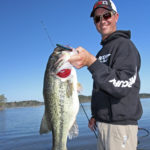
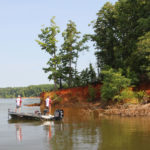
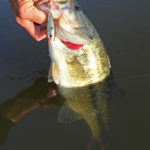
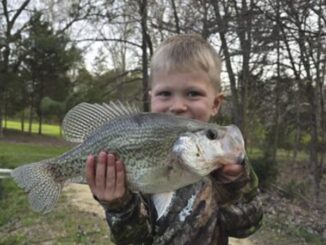

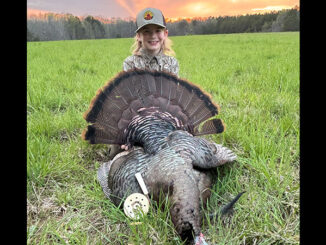
Be the first to comment